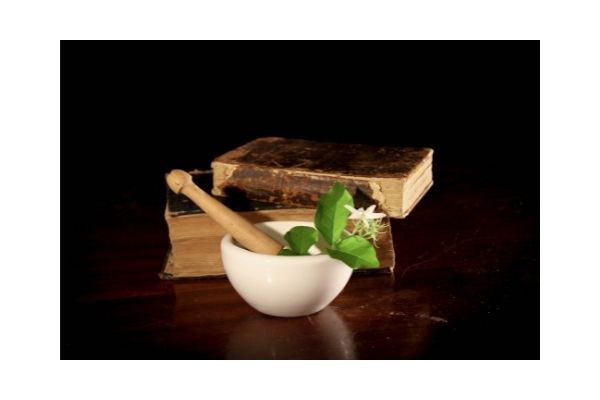There is no permanent cure for hay fever, but like diabetes, it can be controlled in a way that you can enjoy your summer, outdoor sport and camps without any hay fever symptoms. The trick is to manage your food. Our natural home remedies and food-based program targets the root cause and boosts lung health. These remedies include food recipes and essential oils that help you control the symptoms and give immediate relief.
Below is the list of food ingredients, that may help you relieve your Hay fever symptoms. But before you just go ahead with this food ingredient list, it is crucial to know how to use them and their quantities and combinations for effective results.
The right way of using these ingredients is the key to getting expected and useful results.
HOW TO GET RID OF HAY FEVER SYMPTOMS?
Food for hay Fever Home remedies and Treatment
1. Ginger
2. Coconut
3. Turmeric
4. Carom seeds
5. Cumin
6. Honey
7. Hibiscus
8. Chillies
9. Black pepper
10. Nutmeg
Even though there is no permanent cure for hay fever, you can permanently control the symptoms of hay fever based on your food intake. These natural foods help you in controlling hay fever symptoms if prepared in a specific way. You can also add these foods to your meals, snacks and drinks as much as possible.
From Ayurveda Perspective, the above-listed foods are warm foods. They make the body warm and helps in respiratory system problems as most respiratory system problems are caused due to excess phlegm which is cold in nature. Read more about his in the last section of this article.
Here are a few recipes you can make at home that will give you relief from the symptoms of hay fever:
RECIPES
| Ginger |
| Properties: Ginger is used as medicine and in food. Antioxidants and other nutrients of ginger improve respiratory symptoms in people with (chronic obstructive pulmonary disease or COPD). In a 2013 study, researchers concluded that fresh ginger might help protect the respiratory system. It helps with cold, cough, flu and other conditions. |
| Recipe 1: Ginger water Ingredients: GingerWater Depending on how strong you want the ginger water to be, you can use more or less water or ginger. Process: Wash and peel the part of the ginger root. Use a zester to grate one tablespoon of ginger. Add the ginger to 4 cups of water and let it boil. Let the ginger water boil until it becomes half (2cups). Take the ginger water off the heat and let the ginger steep in the water for 10 minutes. Strain the ginger water and discard the ginger. Drink it warm or at room temperature twice a day (not more than that). |
| Recipe 2: Ginger honey extract Ingredients: HoneyGinger Process: Add two drops of honey in one teaspoon of raw ginger extract and take it twice a day. |
| Bonus: Helps regulate the menstrual cycle and lose weight. |
| Disclaimer: Safe during pregnancy and breastfeeding |
| Turmeric |
| Properties: The root of turmeric is widely used to make medicine and food. Curcumin, a chemical found in turmeric, reduces hay fever symptoms such as sneezing, itching, runny nose, and congestion. According to a paper published in 2011, turmeric is commonly used for hay fever, high cholesterol, a type of liver disease, itching, chronic anterior uveitis, conjunctivitis, skin cancer, smallpox, chickenpox, wound healing and urinary tract infections. |
| Recipe 1: Turmeric water Ingredients: 1 pinch of turmeric1 glass of water Process: Add one pinch of turmeric to a glass of warm water, stir it well and drink it in the morning on an empty stomach. |
From the perspective of Ayurveda, a healthy body has a balance of hot and cold, and lung health problems are related to excess coldness in the body. Phlegm is cold in nature. So, excess mucus is the indicator of the imbalance. Below are the symptoms of excess phlegm in the lungs:
Fresh excess phlegm symptoms:
- Runny nose
- Stuff or clogged nose
- Sneezing
- Heavy head
- Coughing out phlegm
- Itchy or tingling nose
- Reduced sense of smell
Old excess phlegm symptoms:
- All the above
- Dry coughing
- Watery eyes
- Phlegm coming in the throat
- Earache
- Chest congestion or tightness
- Shortness of breath
- Feeling tired
- Wheeze
- Yellow, green colour phlegm
- Bad Breath
- Loss of sense of smell
All these symptoms and their triggers depend on how old the excess phlegm in your lungs is. And if the excess phlegm generation problem is chronic.
From Ayurveda perspective, hot and cold body balance can be maintained through the daily food that we consume. Plus, through some specific but straightforward daily food preparations, the cold and heat imbalance can be addressed. Avoiding food that creates coldness in the body and consuming food that creates heat in the body can work magic in getting long term relief from Hay fever and other phlegm related problems.
One important thing to understand is that the coldness and hotness of food are not defined by its temperature; instead, they are defined by how it feels and works once you consume them.
E.g. when you take a sip of a hard drink mixed with ice, it feels so cold, but if you drink it, you might know how warm it feels inside. The coldness of ice cannot change the hot properties of an alcoholic drink. So, don’t go by the temperature of the food, though it might play a small role.
Hay fever is more prevalent in cold countries which is why eating food that makes the body warm becomes even more critical.
Food given in the above list is a good source of generating heat in the body to control cold-related health problems.
Essential Oils for Hay Fever Home Remedies
Essential oils are powerful when it comes to a stuffy nose or runny nose, which indicates cold.
Every night, before going to bed, run the essential oil diffusers using one of these oils and let your room be filled with the aroma. Breathing it mildly through your diffuser gives relief from cold and hay fever symptoms.
If you do not have an oil diffuser, then you can put some drops of these oils on a paper napkin and keep those napkins around your pillow.







